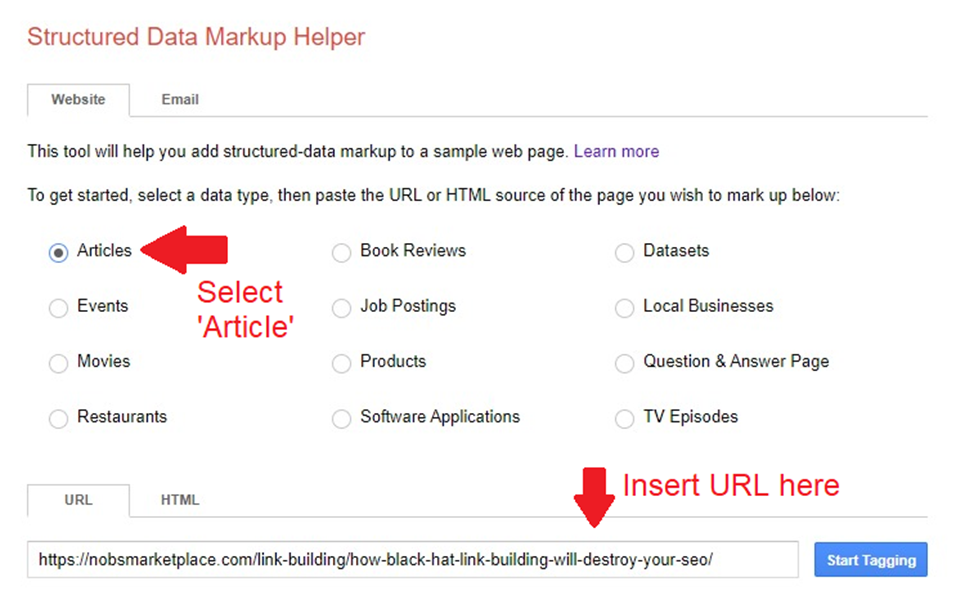 Let’s get the title of this post out of the way. This is a schema.
Let’s get the title of this post out of the way. This is a schema.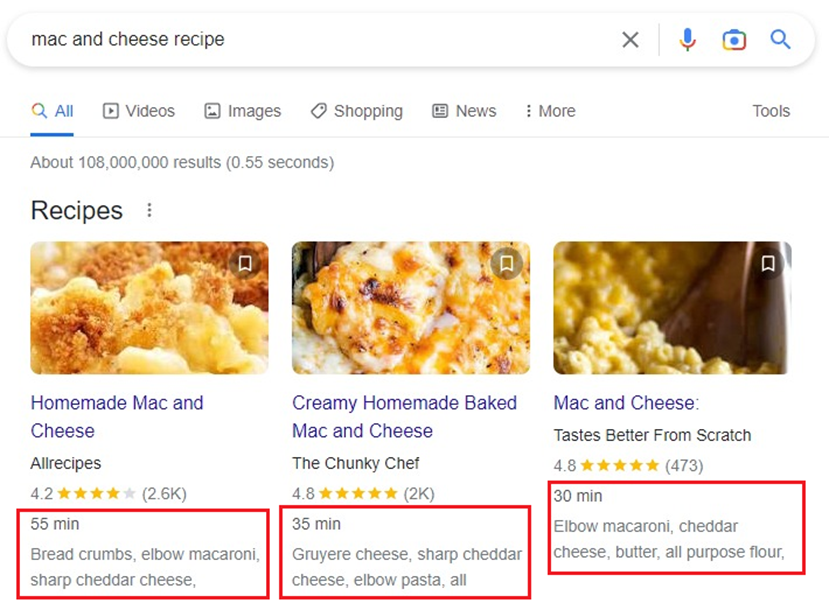
To be accurate, this is the product of Schema, a system that allows search engines like Google to comprehend information in search results. In the example above, the search query for ‘mac and cheese recipe’ yielded these recipes at the top of the results page. Google understood this because of how the information in the red boxes appeared, as in a list of ingredients.
The fact that Google recognises 32 types of such snippets suggests that it’s an integral part of SEO. Then again, why wouldn’t Google like it? Schema essentially helps websites tell search engines what their page is and what it’s about. As a result, search queries become more accurate, though not all benefit from Schema.
This article will delve into Schema and how it can work wonders for a business’s SEO strategy. Spoiler alert: Some coding knowledge is necessary.
The Semantic Web
Schema is a joint initiative by four of the world’s search engines: Google, Bing, Yahoo, and Yandex (widely used in Russia and some former Eastern Bloc states). It was introduced into search engines around the mid-2010s, with the latest version, 14.0, released just last March.
However, the concept is by no means a recent development. It dates back to the early years of the World Wide Web, particularly a decade after the invention of the World Wide Web. In his book, ‘Weaving the Web,’ Tim Berners-Lee (yes, Father of the Web) envisioned a time when machines could read all data on the internet.
Weren’t machines at the time capable of that? Not in the context Lee wanted, at least. He wished for machines to understand semantics or meaning, which he later coined as ‘Semantic Web (later known as Web 3.0).’
Schema wouldn’t be possible without such a vision. For instance, if you searched for ‘digital marketing’ in the pre-Panda era, the results would likely depend on how many pages on the internet had the keyword. Do the same with today’s Google, and you get this:

It’s incredible how a simple query like ‘digital marketing’ can bring up so much. Aside from the top result from Mailchimp, you have the following:
- A suggested search based on recent search activity
- Several tabs that lead to different results (i.e., videos, types, books)
- A collapsible section for frequently-asked questions (FAQs)
- A knowledge panel on the side with basic details about the search term
You probably didn’t ask for that much, but you’ll likely find the other information valuable later. Imagine if, for instance, one of the answers to the FAQs led to a business’s blog or webpage.
The Schema-tic Edge
It’s important to know that there’s little to no evidence of Schema being a factor in improving a website’s organic traffic. However, it increases the chances of that happening by giving a site or page apt exposure.
Additionally, remember that many users are clicking these snippets, an estimated 58 out of 100 clicks. FAQs perform better than other snippets, attracting 87 for every 100 clicks. If involving branded keywords, the figures improve to 60 and 91 per 100, respectively.
To determine if a page can generate these snippets, you can run its URL through Google’s Rich Results Test. We ran one of our earlier blog posts, ‘What is Tactical Link Building,’ through the tool and weren’t disappointed with the results.
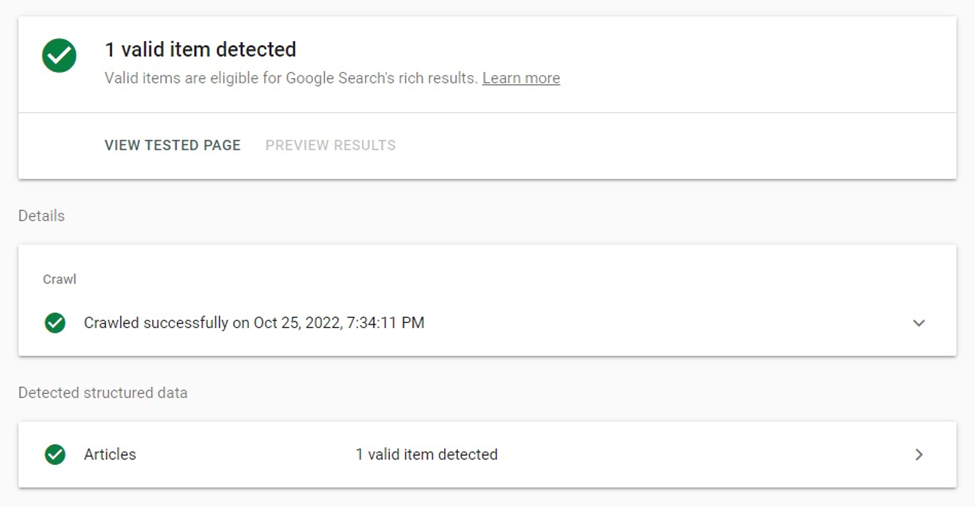
Here’s how the blog post appeared when searching for ‘tactical link building.’
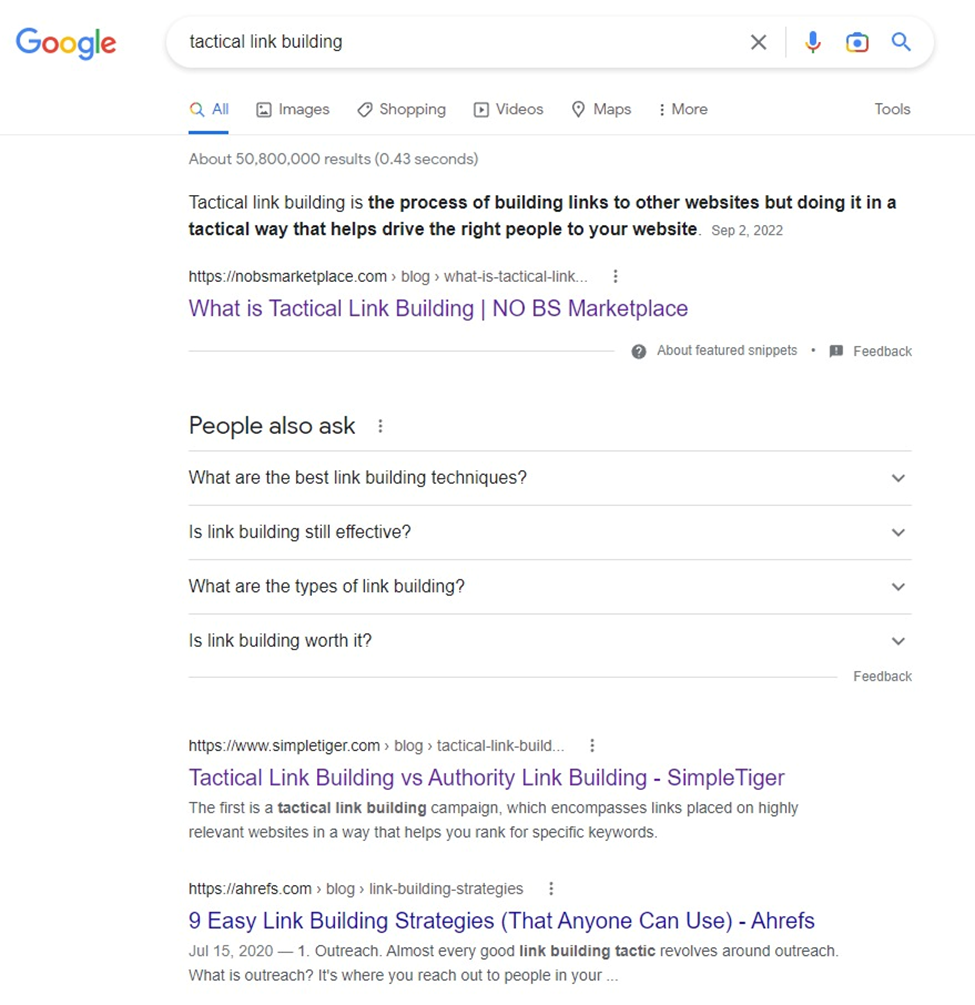
The blog post is ranked first in the query results, though not in a conventional way. Nevertheless, it’s at the top, earning a substantial fraction of traffic. The key to this is proper data structuring.
Coding Schema
Utilising Schema, whether or not for digital marketing, requires the proper lines of code inserted on the page. Google recognises two types of data structuring codes.
- Javascript Object Notation for Linked Data (JSON-LD)
JSON-LD is the latest version of the lightweight and easy-to-use JSON format. The addition of linked data allows pages to be interconnected, starting at one data point and following it to other networked data points. Below is what a JSON-LD code looks like in adding article-type structured data, according to the Google Developers site.

Most search engines, especially Google, prefer JSON-LD because it’s easy to make changes when needed. It’s also versatile, being compatible with all kinds of media, including images, music, and video.
- Microdata
Microdata is an HTML-based code that creates a richer snippet experience by visually styling a page’s elements. Here’s an example of a microdata code for adding article-type structured data, again from the Google Developers site.
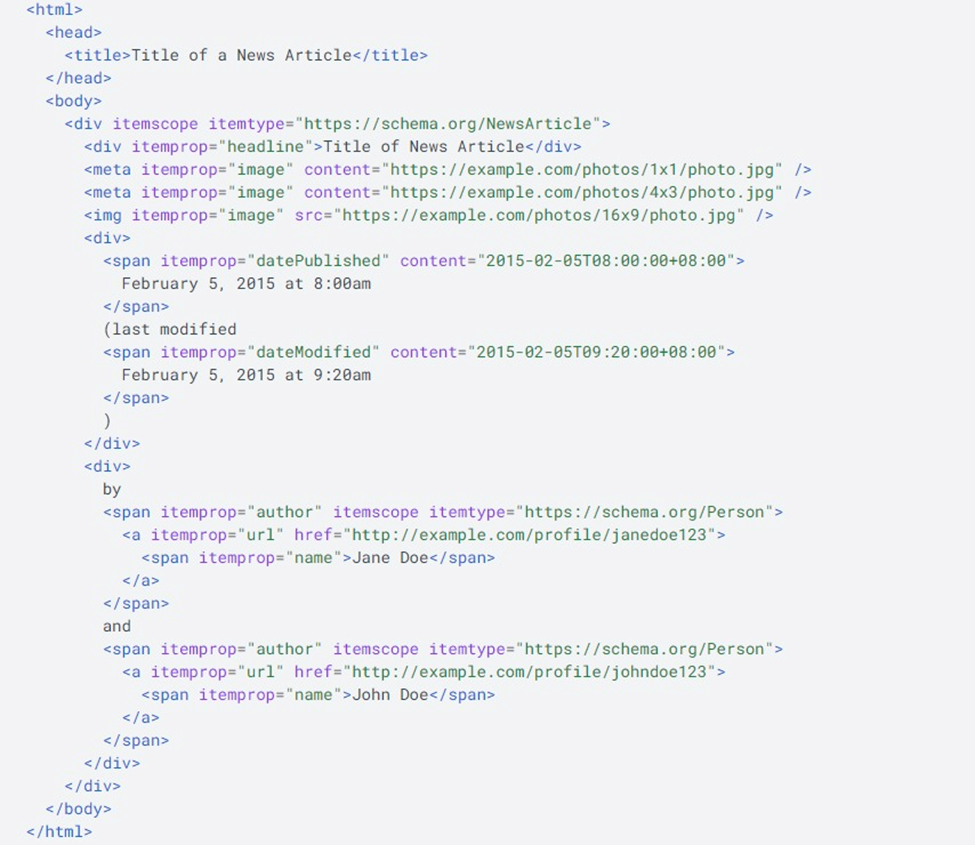
You may notice that it’s somewhat longer than JSON-LD because it individually specifies elements via three metatags: itemscope, itemtype, and itemprop. As a result, microdata can be burdensome in structuring data for larger websites. You can check the Schema.org site for further details, but, needless to say, it’s complex.
Said complexity is also why Google favours the lightweight JSON-LD over microdata today. However, it isn’t a stringent requirement for SEO.
The Schema Markup Process
Coding knowledge is a welcome bonus, but Google’s Structured Data Markup Helper tool makes applying Schema to pages easier. In this section, we’ll use the tool to help another of our blog posts, ‘How Black Hat Link Building Will Destroy Your SEO,’ receive the Schema treatment.
- In the tool, copy-paste the URL and select ‘Article’ as the data type.

- 2. Tag specific data on the page by highlighting them. In the example below, we highlighted the blog post’s title and chose ‘Name’ as the data tag. Repeat this step for every data tag with the relevant data.
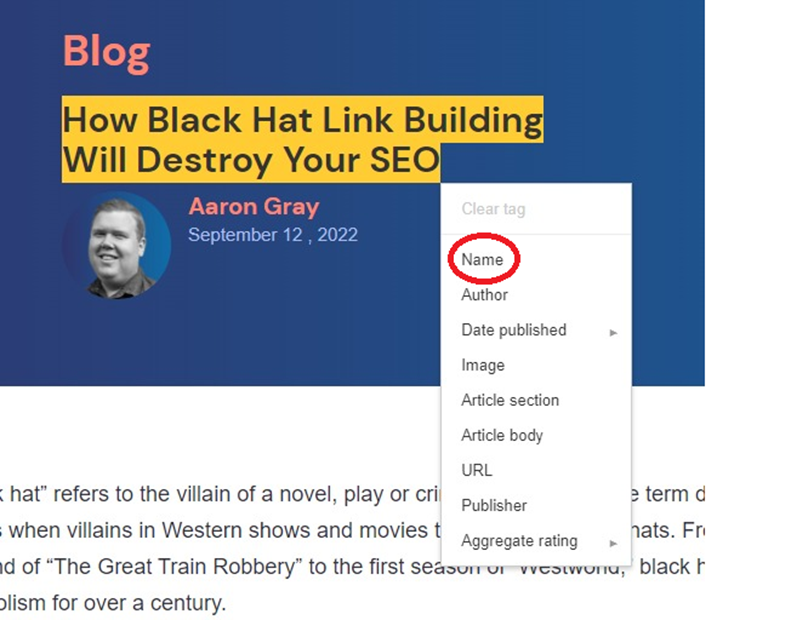
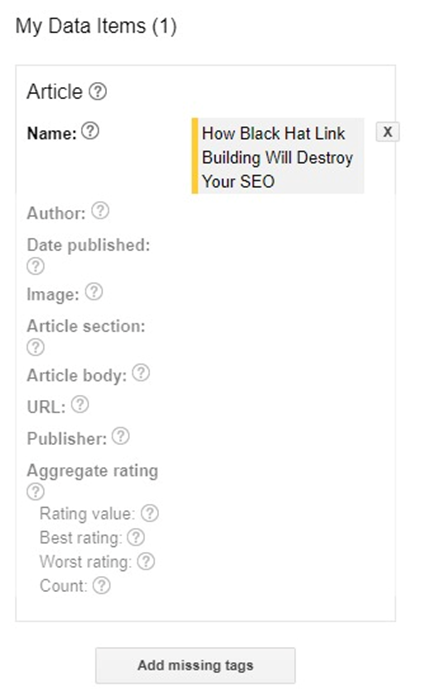
- Note that you can manually add data by clicking ‘Add Missing Tags.’ We did just that for the blog post’s URL.
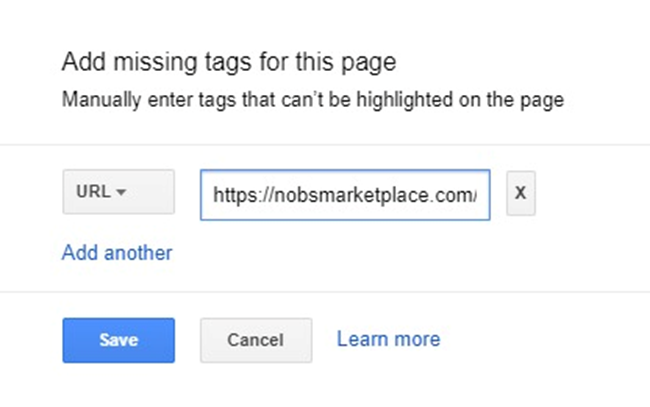
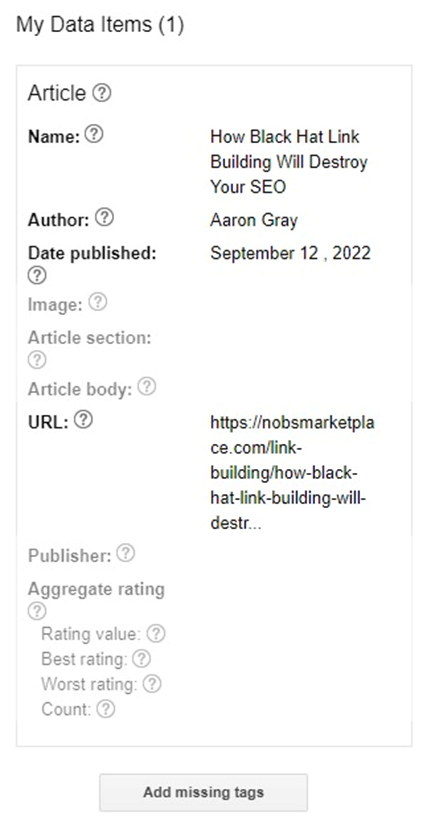
- 4. Once done, click ‘Create HTML’ at the top of the data item panel. The tool will generate two structured data codes, one for JSON-LD and another for microdata. Here’s how the entire code appears in JSON-LD.
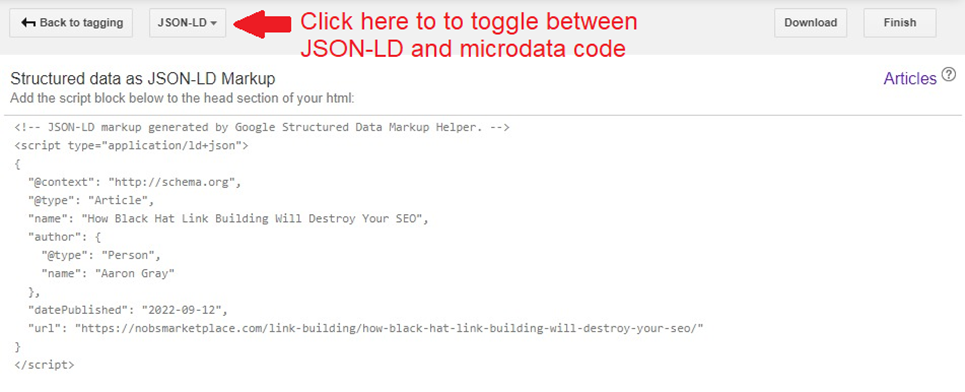
Unfortunately, we can’t show the entire microdata code because it’s insanely long. Here’s a part of it showing how detailed microdata can be.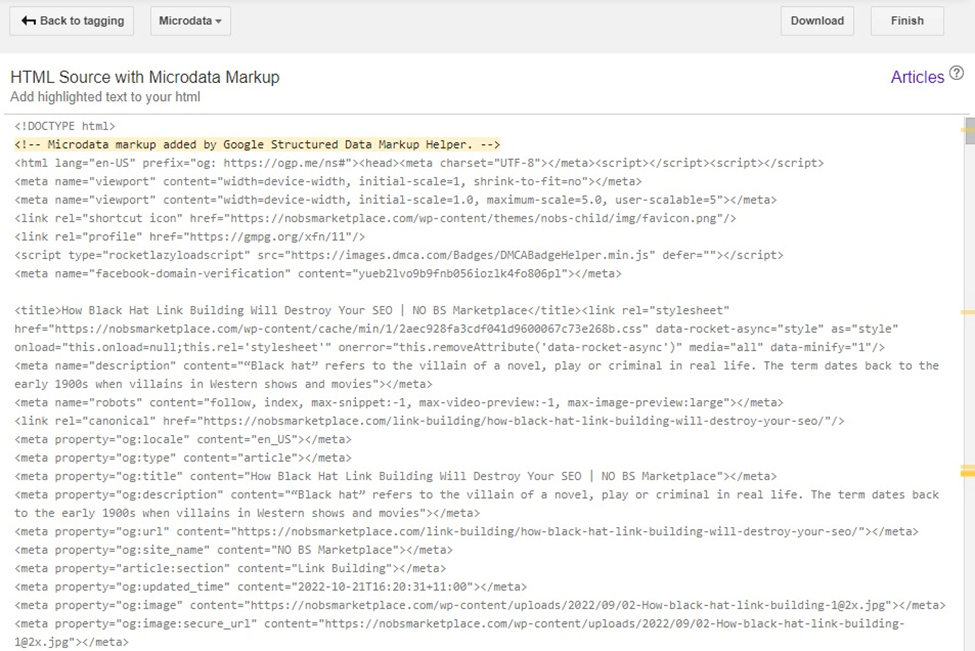
- 5. Download the markup and incorporate it into the page’s code. In addition, click ‘Finish’ to know the next steps which include searching for more data tags and testing the code. Schema.org suggests placing as many markups as possible to get the best possible result, though only on data users can generally see.
Some Schema Strategies
The competitive advantage Schema can offer a business is too good to pass up. With the right content, even small and medium-sized enterprises can give large ones a run for their money in search results. Here are some examples.
- Knowledge Panels For Brand Awareness
When a user searches for a person, a place, or an object, Google produces knowledge panels on the right side of the search results. In Google’s words, these panels yield ‘a quick snapshot‘ of relevant information based on how the search engine understood the query. For example, if you search for NO-BS Marketplace, you get this:
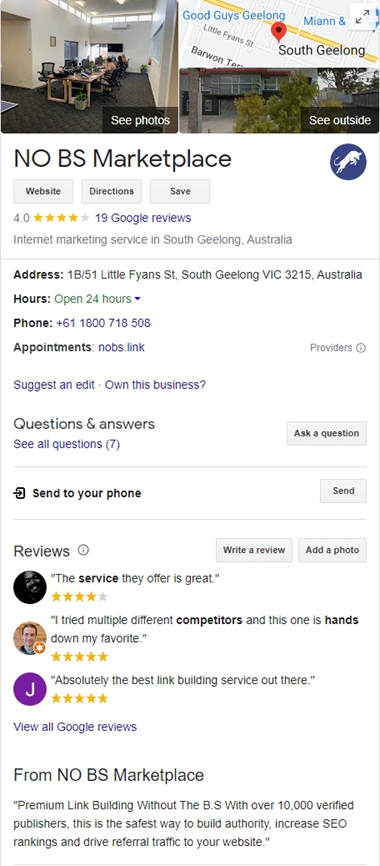
Knowledge panels can be valuable media for promoting your brand. Consolidating a brand’s information in a simple search result improves its image since potential customers get an idea of what it is, what it offers, and what others think about it.
- Local Business For Reservations
For businesses that deal with appointments or advanced orders, Google has the local business schema to help people locate them quickly. For example, searching for ‘Mexican restaurant Melbourne’ generates the following result:
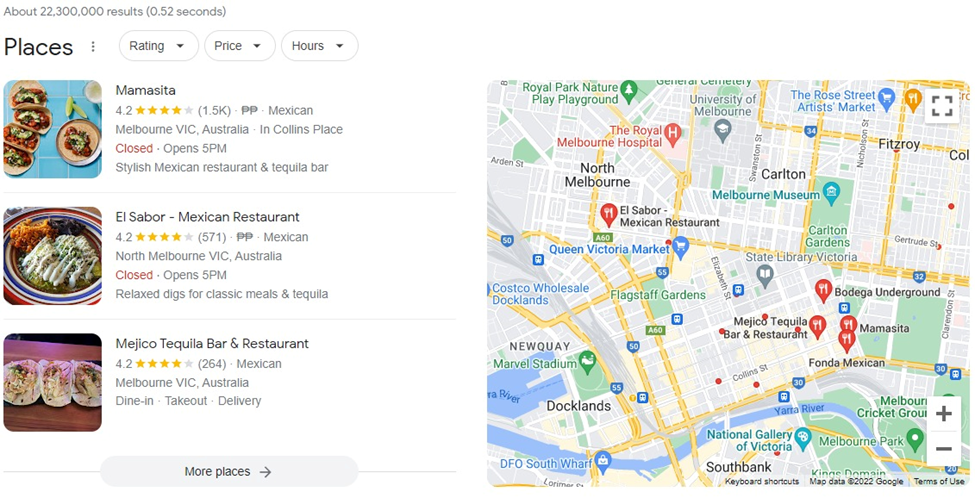
Since Google gathers location data primarily through Google My Business, it pays to sign your business up for an account (the same applies to the knowledge panel). Moreover, make sure the business address and contact details are correct and up-to-date.
- Reviews To Show Trustworthiness
Product and business reviews are as important to consumers as to businesses. Nine out of ten people on the internet peruse reviews before deciding whether or not to purchase a product or service. Meanwhile, brands go through reviews to determine any issues with their customer experience and find ways to improve it.
A business that wants to show how trustworthy it is to potential consumers can rely on the review schema. When users search for a particular product or service’s reviews, Google will prioritise such information on the results page like this: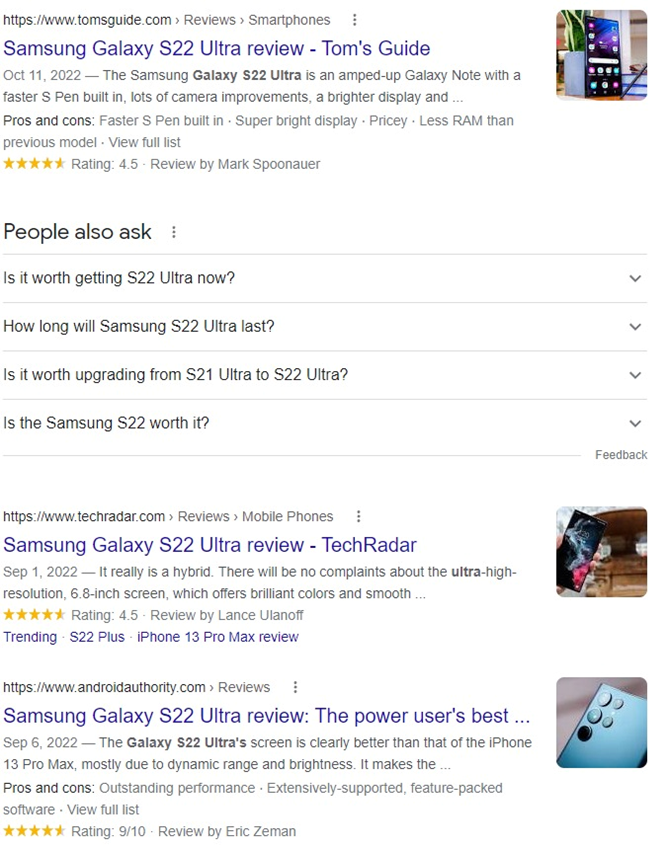
The rating data on each result is a big help to people looking to, in this context, buy a new smartphone. The snippet listing the phone’s pros and cons adds to the information’s value. Together, they lessen the time people will need to come to a decision
- Sitelinks to occupy more search result space
Instead of the visitor having to make their way to the destination page, Google shortens the trip with a sitelink schema. NO-BS’s sitelink result on the search results looks like this:
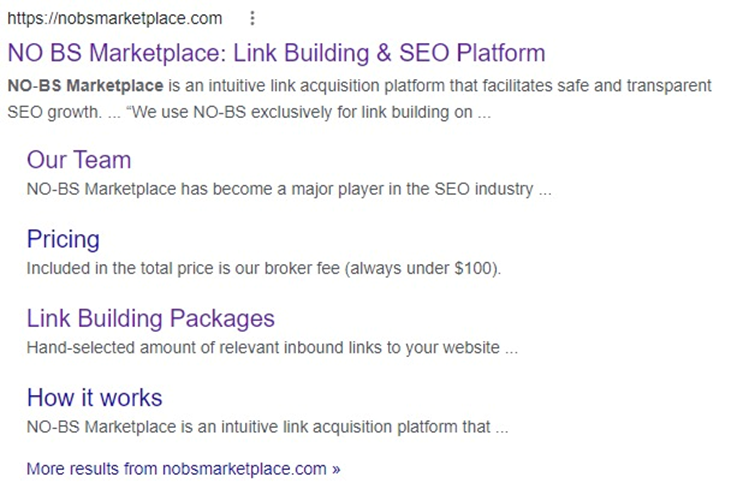
In this example, visitors don’t need to go through the landing page and scour it for the next button to click. Looking to know more about our intrepid team? Go straight to ‘Our Team.’ Want to learn how we do link building? Click ‘How It Works.’
But perhaps the more important advantage is the space it occupies on the search results page. Typically, Google lists 10 results per page. With a sitelink schema, the number of results on the first page is down to eight since the NO-BS sitelink occupies 20% of the results.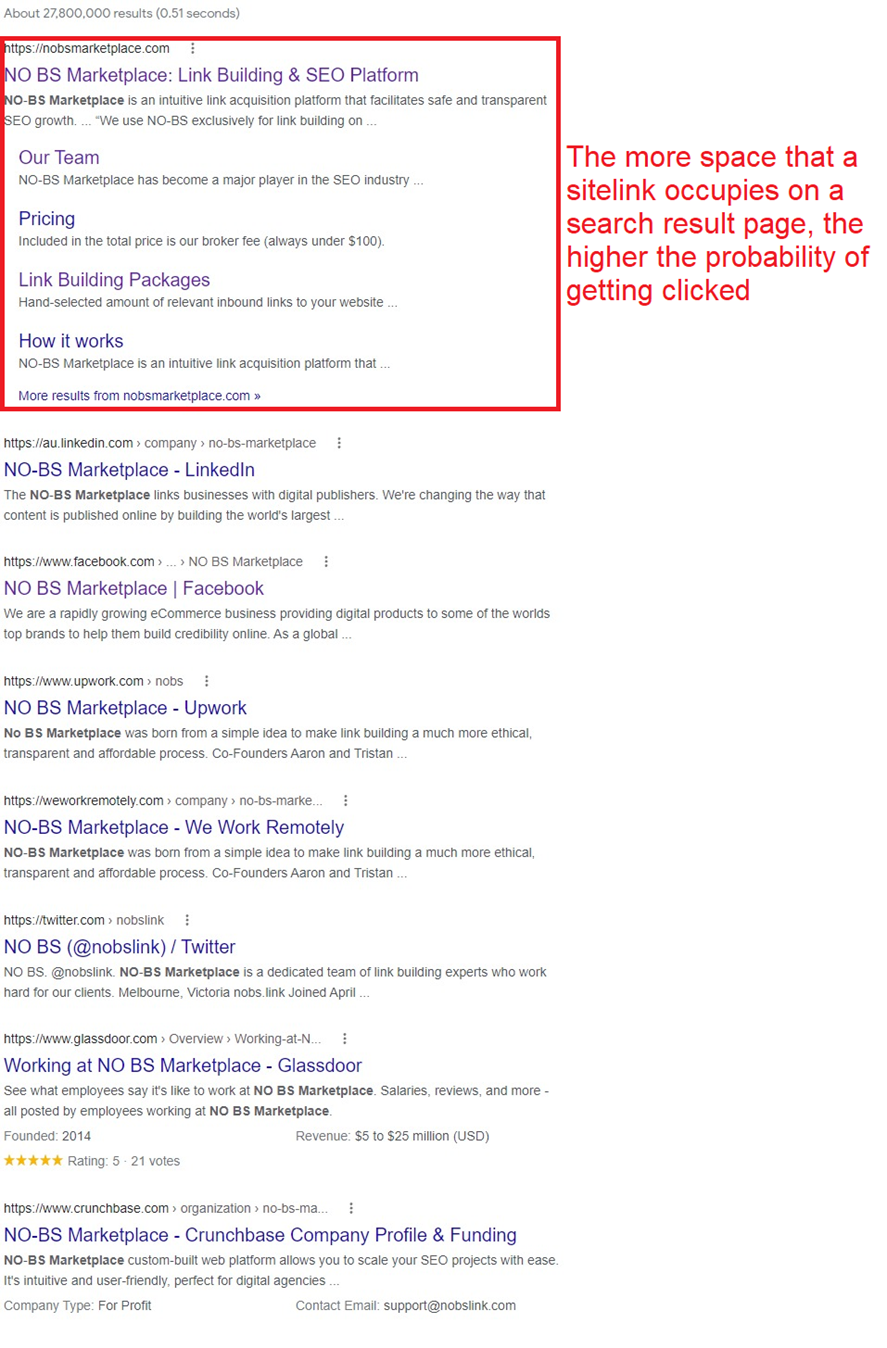
Conclusion
The advent of Schema has more or less fulfilled Lee’s vision for a Web that understands context. The dozens of rich snippets it has helped produce will be the face of current and future search, let alone SEO. Any medium can rank high in search results by employing the correct data type and inserting the proper data tags. Pair that effort with adequate link building and see a page’s chances of ranking high shoot up. Get in touch today and let us help you with your SEO and link building efforts.
